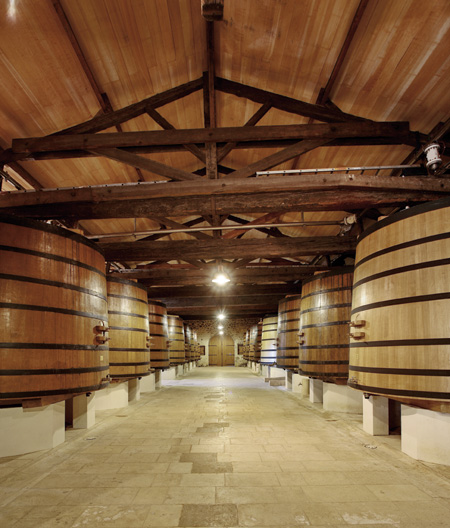Winegrowers’ portraits Saint-Julien-Beychevelle
 The Bartons are an old family from Ireland. Part of their history starts in Bordeaux' region in the 18th century when Thomas Barton, who was in France for trade, got interested in the wine and settled his first company―which would later become Barton & Guestier―in Bordeaux. He quickly became the first trader of Bordeaux and built up a solid reputation with a faithful clientele in all Europe. However the law of escheatage, abolished in 1819, held him back from acquiring his own vineyard. It is only in 1821 when Hugh Barton, his grandson, purchases Château Langoa, and in 1825, a part of the domain of Léoville, that the foundations of the wine dynasty are laid in the Médoc.
The Bartons are an old family from Ireland. Part of their history starts in Bordeaux' region in the 18th century when Thomas Barton, who was in France for trade, got interested in the wine and settled his first company―which would later become Barton & Guestier―in Bordeaux. He quickly became the first trader of Bordeaux and built up a solid reputation with a faithful clientele in all Europe. However the law of escheatage, abolished in 1819, held him back from acquiring his own vineyard. It is only in 1821 when Hugh Barton, his grandson, purchases Château Langoa, and in 1825, a part of the domain of Léoville, that the foundations of the wine dynasty are laid in the Médoc. 
Langoa and Léoville Barton favour a traditional approach of the elevage. Grapes are vinified into 200-hl oak barrels. The wine then stays in new oak barrels for two years. Although the domain has the latest equipment, no rush for modernization. To Anthony Barton, wine can be made in any container as long as it is monitored carefully. Rather than making important investments in the vathouse, the family preferred to keep the big wooden vats, efficient and pleasant to look at, but equipped them with a temperature control system. Cost control, the family structure, helped to maintain a very sensible pricing strategy for the appellation, especially En Primeur. By being the cheapest Léoville, Anthony Barton certainly brought about some teeth-grinding. But he assured himself a faithful clientele and the “non-race” to profits enabled him to maintain the domains within the family.
Now Anthony Barton passed over the reins to his daughter Lilian. She is in charge of the management of the domains and she represents the châteaus in France and abroad. Latest “recruit”, young but already experienced, Mélanie, Lilian's daughter, joined the team in 2013 and starts career at Château Mauvesin-Barton in the Moulis AOC, acquired in 2011 by the family. Trained enologist, she admits being more at ease in the cellars for the moment. New generation, but no wind of revolution. “I pursue the same approach as in the other domains: making wines simply” and perpetuate the Barton tradition.